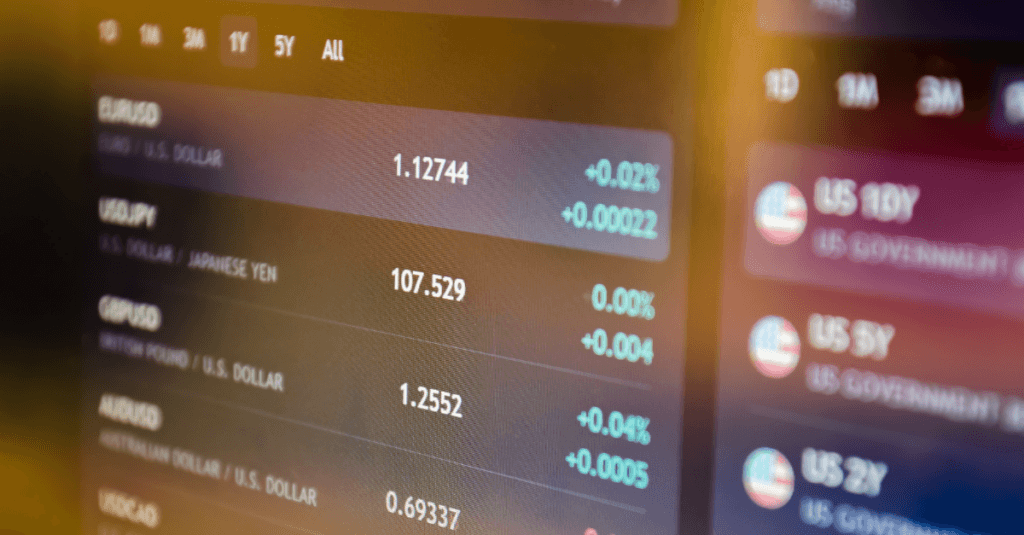Success, in forex, comes from making good trading decisions. But as a new trader, how do you know which currencies to trade? In this article, we’ll cover the eight major currencies in forex.
What are Major Currencies in Forex?
“Major currencies” are the most profitable currencies for trading in forex. They have the highest liquidity and as such are traded more regularly. All currencies are denoted using ISO-4217 symbols. Here are the symbols for all the major currencies:
USD = the US Dollar
EUR = the Euro
GBP = the British Pound Sterling
JPY = the Japanese Yen
CHF = the Swiss Franc
CAD = the Canadian Dollar, or ‘Loonie’
AUD = the Austraian Dollar, or ‘Aussie’
NZD = the New Zealand Dollar, or ‘Kiwi’
As you can see, currency symbols always have 3 letters. The first two letters represent the name of the country and the third letter is the name of that country’s currency. For example for GBP, the ‘GB’ is Great Britain and ‘P’ stands for Pound.
The United States Dollar (USD)
This is the home currency for the United States and is also referred to as the ‘Buck’. It is one of the most commonly traded currencies on the forex market. It acts as the world’s largest reserve currency. It is also used to price commodities such as oil. The Federal Reserve System issues and regulates the USD. The value of this currency is influenced by central bank announcements, interest rates, gross domestic product, and employment reports.
Euro (EUR)
This is the European Union’s official currency. It is also known as ‘Fiber’. It was introduced in 1999 and it is the second most traded currency after the US Dollar. It is also the second largest reserve currency. The European Central Bank (ECB) makes monetary policy decisions and also issues the currency. The price of the EUR is affected by Gross Domestic Product reports, political and economic factors in the economic block.
Japanese Yen (JPY)
This is Japan’s currency and is issued by the Bank of Japan. The value of the currency is influenced highly by the strength of the country’s economy, industrial production index, and GDP reports. The Japanese Yen is popular due to its involvement in the carry trade. This is where people profit from trading differences in interest rates. The zero interest rate policy of Japan allows borrowing at low cost to invest in other currencies and benefit from the differences in rates.
Great British Pound (GBP)
This is the home currency of the United Kingdom and is issued by the Bank of England. It is ranked as the fourth most traded currency. The British Pound is majorly influenced by economic performance, monetary policies, GDP and inflation rates. GBP was once ranked as the second most traded currency but it was surpassed by the Euro and the Japanese Yen.
Swiss Franc (CHF)
This is Switzerland’s official currency and is regulated by the Swiss National Bank. The bank also monitors the Forex market to ensure reduced volatility of the market. This currency is considered a safe haven because of the monetary policies set and it also rises when there is high uncertainty in the market.
Australian Dollar (AUD)
This is the currency used in Australia and is issued by the Reserve Bank of Australia (RBA). The Australian Dollar is ranked sixth as a reserve currency. Its value is mostly influenced by prices of commodities such as oil, coal, iron, and copper. It is also influenced by import and export rates. Differences between interest rates of RBA and other central banks also have an influence on the currency value.
Canadian Dollar (CAD)
It is Canada’s official currency and is regulated by the Bank of Canada. It is ranked fifth as a reserve currency. Canada is almost similar to Australia in terms of the natural resources. This means that the value of the currency is dependent on the prices of commodities. If the prices of commodities rise, then the currency’s value will rise and vice versa. The value of the currency is also influenced by the economic performance of the United States since they are major trading partners.
New Zealand Dollar (NZD)
The NZD is New Zealand’s official currency. It is issued by the Reserve Bank of New Zealand (RBNZ). RBNZ sets interest rates and ensures price stability by targeting inflation to a certain percentage. The high interest rates encourage carry trade.
New Zealand mostly exports commodities and agricultural products. This renders its economic performance to be dependent on commodity prices. Increase in commodity prices boosts the Gross Domestic Product which leads to the appreciation of the currency. Additionally, Australia is a major trading partner of New Zealand. Hence, the economic performance of New Zealand is influenced by the economic performance of Australia. The most important economic indicators that influence Kiwi’s value include; trade balance, gross domestic product, and consumer price index.
Final Thoughts
It is important for you to understand which currencies are the most popular, and what factors affect the value of those currencies. Keeping this in mind will maximise your potential for effective trading.
Ready to find out more about forex trading? Visit our forex education section here.
